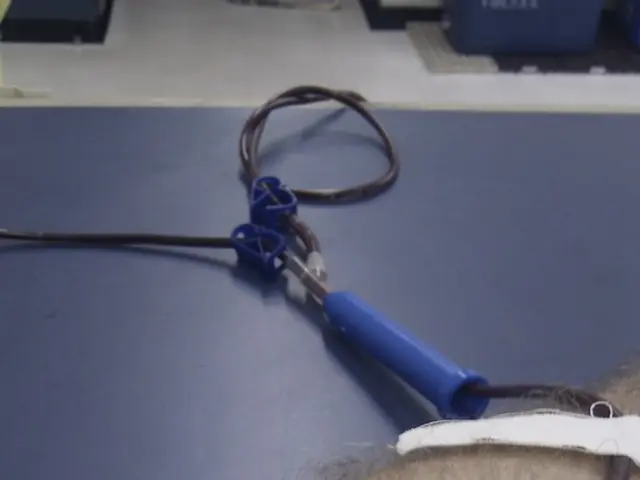Unmasking Sleep Apnea: Your Comprehensive Guide
Sleep Related Breathing Disorders: Symptoms, Triggers, and Remedies
Sleep apnea, a sleep disorder characterized by repeated interrupted breathing during sleep, wreaks havoc on your nightly slumber, daytime functioning, and overall health. Here's what you need to know about this ubiquitous condition, including its types, symptoms, causes, health consequences, diagnosis, and treatment options.
Diving Deep into Sleep Apnea
Types of Sleep Apnea
- Obstructive Sleep Apnea (OSA): The most common form of sleep apnea, OSA occurs when the muscles that keep your airway open relax, causing the soft tissues to block the airflow. It's characterized by loud snoring and disruptive breathing.
- Central Sleep Apnea (CSA): Less common than OSA, CSA involves the central nervous system malfunctioning, resulting in temporal pauses in breathing. People with CSA usually don't snore.
- Complex Sleep Apnea: A rare combination of OSA and CSA, this condition requires targeted treatment for both components.
Understanding Sleep Apnea Episodes
As breathing comes to a halt during a sleep apnea episode, oxygen levels in the blood plummet, causing the brain to jolt you awake with brief, unnoticed awakenings. This prevents deeper, restorative sleep, leading to daytime fatigue, sleepiness, and potential health issues.
Symptoms and Diagnosis
- OSA Symptoms: Frequent, loud snoring, frequent gasping or choking during sleep, daytime sleepiness, dry mouth or sore throat upon waking, insomnia, and morning headaches.
- CSA Symptoms: Similar to OSA, with additional symptoms such as heart disease, stroke, or neurological disorders.
Remember that bed partners can help identify symptoms if you're unaware during your sleep.
To confirm a sleep apnea diagnosis, visit a sleep specialist and undergo a sleep study, either in a laboratory or using a portable monitor.
Common Causes and Risk Factors
- OSA Causes: Male sex, older age, obesity, anatomical differences such as narrow airway, receding jaw, enlarged tonsils, deviated septum, and alcohol and tobacco use.
- CSA Causes: Male sex, older age, heart disease, stroke, neurological disorders, sleep disorders, medications, and brainstem or spinal cord injuries.
Consequences and Complications
Sleep apnea can lead to high blood pressure, heart disease, diabetes, atrial fibrillation, stroke, and increased risk of accidents and productivity errors. Furthermore, severe sleep deprivation impacts mood, cognitive function, and overall mental health.
Seeking Treatment
If changing lifestyle habits doesn't alleviate symptoms, try continuous positive airway pressure (CPAP) therapy, oral appliance therapy, or implants like the pacemaker system. For central sleep apnea, consider adaptive servo-ventilation (ASV) and adhering to a consistent sleep schedule.
Remember, sleep apnea is treatable, and with the right approach, you can improve your sleep quality, reduce daytime fatigue, and boost overall health.
- Workplace wellness programs could benefit from promoting awareness about sleep apnea and its potential effects on mental health and productivity.
- Incorporating therapies and treatments like CBD oil into one's regular routine might aid in managing the symptoms of sleep apnea, though more research is needed to confirm its efficacy.
- Mens' health organizations should prioritize educating men about the significance of sleep apnea, as it can lead to cardiovascular issues and impair overall health.
- Skin care regimens can be an essential component of holistic health and wellness, but it is crucial to obtain enough restful sleep to allow the body to rejuvenate itself, even with atypical patterns of aging.
- Medicare coverage can sometimes include sleep studies and treatment options for sleep apnea, making it important for seniors to understand their benefits and advocate for their sleep health needs.
- Women's health initiatives should include sleep apnea education and screening, given the potential impact of this condition on both mental and physical health during various life stages, particularly during menopause when hormonal changes may increase the risk.








